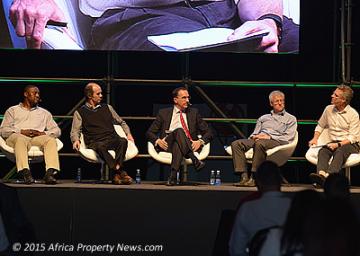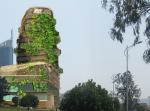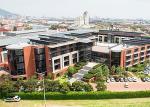Building green, a matter of course
 There is no significant cost difference between the construction of green buildings compared with conventional buildings, and green buildings achieve better investment returns and higher valuations.
There is no significant cost difference between the construction of green buildings compared with conventional buildings, and green buildings achieve better investment returns and higher valuations.
African authorities have not yet developed comprehensive costing standards for building green. Thus is because the idea of costing green buildings is still a new initiative, reports Ortneil Kutama, SA Commercial Prop News Media Director.
However, advanced studies are underway and companies are getting better at costing green buildings. And yes, green buildings are more expensive to design but cheaper in the long run.
Certain objects such as the type of lights used and the use of certain water technological equipment are all common across most green buildings which means they can be measured more easily in terms of their cost.
Various talks occurred at the annual Green Building Conference held recently in Cape Town, where it was discussed that Green buildings represent responsible investing, reduce liability and risk because they are cognizant of, guarding against increasing utility costs, supply constraints, possible carbon taxes and potential mandatory energy performance disclosure and broader regulation.
Green building is now shifting to affordable housing too and this makes getting the costing correct even more important than would be the case with general buildings. Residential property is in high demand in South Africa and listed property groups are investing heavily in it.
These companies want to create buildings which are as green as possible. Green buildings across the spectrum whether they are small houses or large super malls are not necessarily cheap to make green but by being green they save other costs.
With 140 office buildings already certified by the Green Building Council of South Africa (GBCSA) over the past eight years since the green building movement began in 2007, we now have room to make affordable housing green.
The key is to ensure that by building smaller, simpler houses, one is still able to use green principles and green materials otherwise masses of affordable housing will have a more negative than positive effect on the environment.
The University of Pretoria in SA recently undertook a study to analyse if making green buildings would be more expensive than making buildings in general.
The study used a sample of 57 green buildings. It found that on average 44 percent of time and money spent on the building was related to green technology, issues or thought. The actual cost did not vary from location to location however. The Western Cape, Gauteng and KwaZulu Natal which was where the buildings in the sample were located, did not show any major bias in terms of costing. The study found that green could be 5 percent more expensive than building general.
“I think the clear message is that while building green is not always cheaper at first, a green building saves future expenses. The LED lights can last longer, our water hydration systems save water so the building’s landlord has a lower water bill. Energy is saved too so the electricity bill is lower too,” says senior quantity surveyor at the University of Pretoria, Johan van Staden.
“I expect future studies to provide more information on the cost savings of green buildings and if any area in SA may be a cheaper place to build green, especially any major metropole,” Mr van Staden says.
There are also building regulations which are being designed to keep costs low when it comes to building green.
"SANS 10 400-XA is the new set of comprehensive energy regulations. Our homes, such as those in the suburbs of Johannesburg, tend to leak too much heat, for example, and the regulations look to manage this," Architect and Professor Peter Roberts says.
In terms of the regulations, the buildings are effectively seen as boxes which may use energy but only use enough to meet certain functions. These regulations are intended to reduce the carbon footprint of existing and new buildings in a low cost manner. But regarding heritage developments, processes are much more efficient and Mr van Staden agrees that companies should study how heritage architects operate.
“You need to see what all kinds of construction companies and architects are doing when it comes to building green. Use the most efficient and cost effective lighting. But also build to attract natural light so you don’t become reliant on light bulbs. Also, use locally made materials. Don’t import wood you don’t need,” Mr Roberts says.
The Green Building Council of SA (GBCSA) recently announced the 100th certification of a green building; Kirstenhof Office Park in Johannesburg which received a 5-star green rating which certifies excellence.
The council said there was evidence suggesting it was cheaper to build 4-star green buildings than not to.
"A 4-star rating refers to best practice. It is something that all buildings can aspire to and achieve by using commonplace green methods and it is not relatively expensive. We believe all buildings should be built green as a matter of course,” GBCSA CEO Brian Wilkinson said.
He said being green should be a "given" in any construction in Africa.
Property Finance at Nedbank Corporate and Investment Banking (NCIB) were the main sponsor of the annual Green Building Convention which leads the sustainability journey in the South African property industry through inspirational thought and action.
Most Popular
Watch: A Credible Market, the need for Standards in Property Industry
Valuation standards have a significant role to play in helping to regulate professional practice at national, regional and global levels, promoting professional ethics, integrity, impartiality and trust in valuer activities in the property industry. ... Full story











